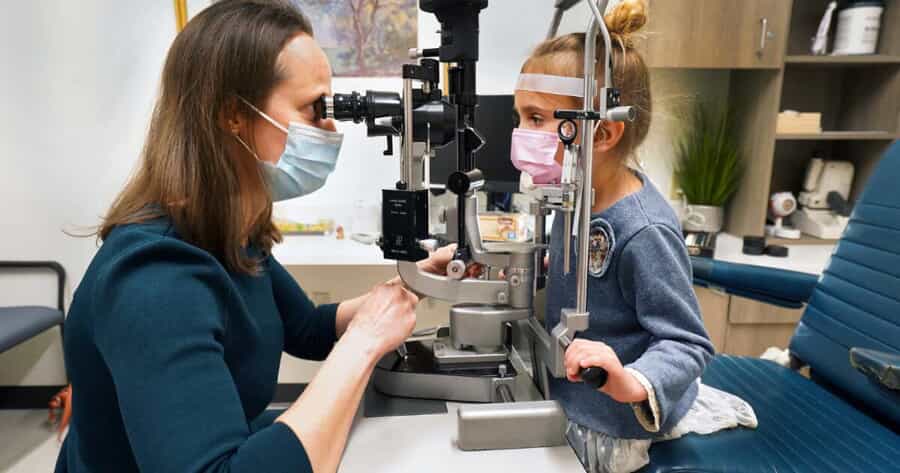Keeping Kids’ Eyes Sharp
- Category: Did You Know?
- Posted On:

Does your young child squint or close one eye to see well? There are very important developmental reasons why parents need to get pediatric vision problems diagnosed and corrected quickly, says Valley Health Eye Specialists’ Fiona Seager, MD, a board-certified ophthalmologist with sub-specialty fellowship training in pediatric ophthalmology.
“We not only see with our eyes, but also with our brains,” says Dr. Seager. “During childhood, the brain learns how to see, just like it learns to hear, talk, and walk. That’s why it is important to see a pediatric eye doctor if you think your child may have a problem with the eyes or if they fail a vision screening with the pediatrician. If a child never sees 20/20 before the age of 7 to 9 years old, unfortunately, it is likely he/she will not see 20/20 as an adult.”
Vision problems can be challenging to diagnose because young children often don’t know there is anything wrong with the way the world looks to them; they have no frame of reference for “normal.” Children rely on their vision at home and in school, when learning and when at play, so vision deficits have a big impact on their quality of life and academic performance.
Dr. Seager emphasizes that it’s important to diagnose and correct problems as soon as possible in young children. Vision—which involves the eyes, nerves and brain—develops during a child’s early years.
The most common vision problems in children include:
- Amblyopia, is abnormal vision development due to vision deprivation. It can be caused by anything that decreases vision such as needing glasses and never getting or using them, eye misalignment, droopy eyelids, etc.
- Strabismus, or misalignment of the eyes. If left untreated, this condition can lead to amblyopia with permanently reduced vision in one eye. Eyeglasses or an eye patch may help, although surgery is sometimes needed.
- Chalazion/stye. Mostly due to a clogged oil gland in the eyelids, a stye can become infected and is often treated with warm compresses.
- Myopia (nearsightedness, in which distant objects are blurry); hyperopia (farsightedness, causing close objects to appear blurry); astigmatism (curvature of the cornea). Eyeglasses can help your child see clearly again.
- Nasolacrimal duct obstruction, or clogged tear duct. Most resolve on their own with massage, but other causes of tearing can be ruled out with an eye exam.
- Retinopathy of prematurity. This condition affects some children who are born prematurely; it can lead to lazy eye.
Signs of Vision Problems in Kids

Although many pediatric vision problems require diagnosis by an ophthalmologist or pediatrician, parents may also notice signs of vision problems. These include squinting, closing one eye or covering one eye with their hand, eye redness or swelling. “If they’re holding non-electronics, like books or toys, really close to their face to see them, this is also an indication,” says Dr. Seager. “And if a child won’t open his or her eye, they definitely need to come in and be seen.” Also, if the eyeball changes in size or if an eye becomes misaligned or drifts, a child should be seen immediately by a doctor to rule out a more serious problem.
Prevent Traumatic Eye Injury
Dr. Seager says she sees her fair share of traumatic eye injuries in children – many of which could have been prevented. She emphasizes the great importance of using eye protection for kids (and adults!).
“Eye protection should always be worn when using tools or firearms like BB guns, riding ATVs, and playing with any toy with projectiles, such as Nerf or paintball guns,” states Dr. Seager. “And there are now really cool-looking goggles that parents can buy for their kids to keep their eyes and vision safe.”
Valley Health Eye Specialists has two locations, in Winchester, VA (540-536-5820) and Woodstock, VA (540-667-7463). Visit valleyhealthlink.com/vheye for more information.


